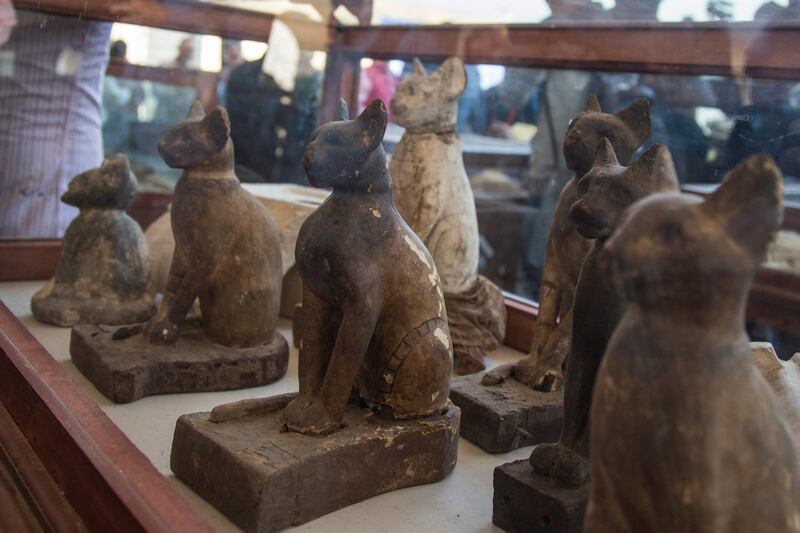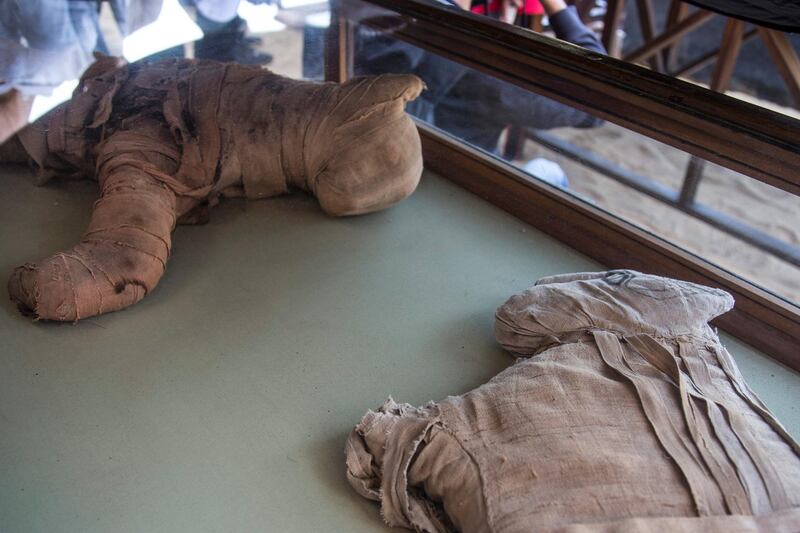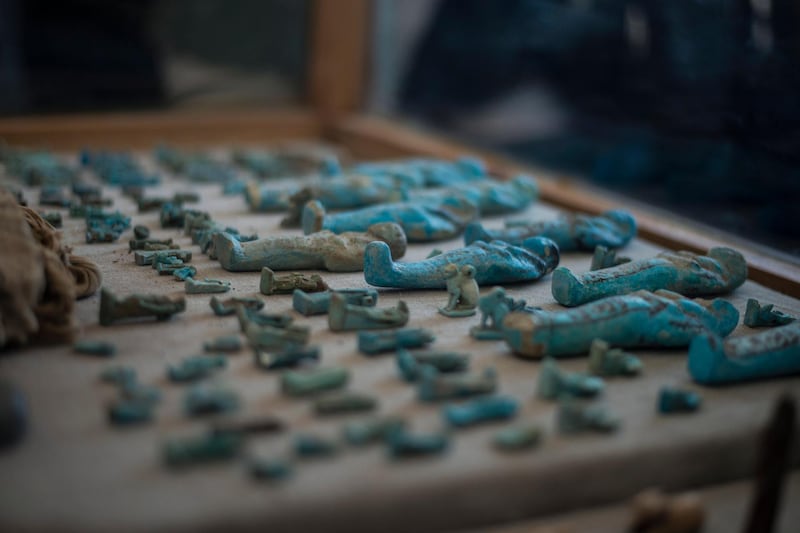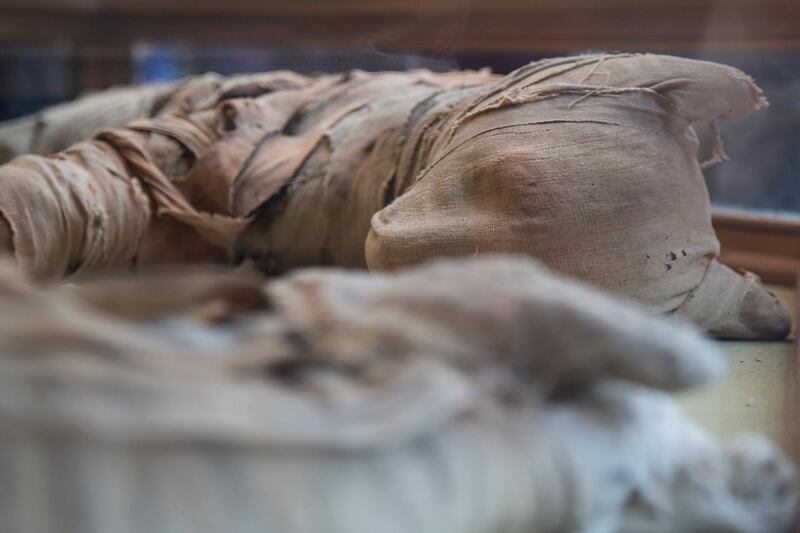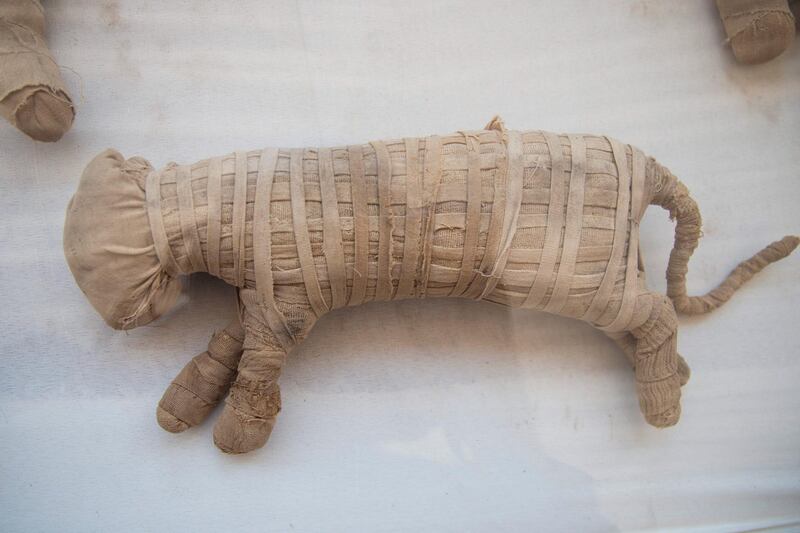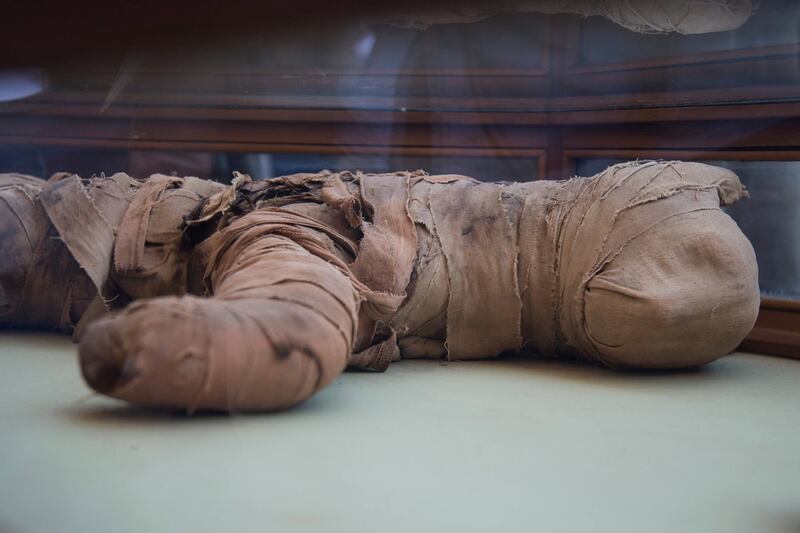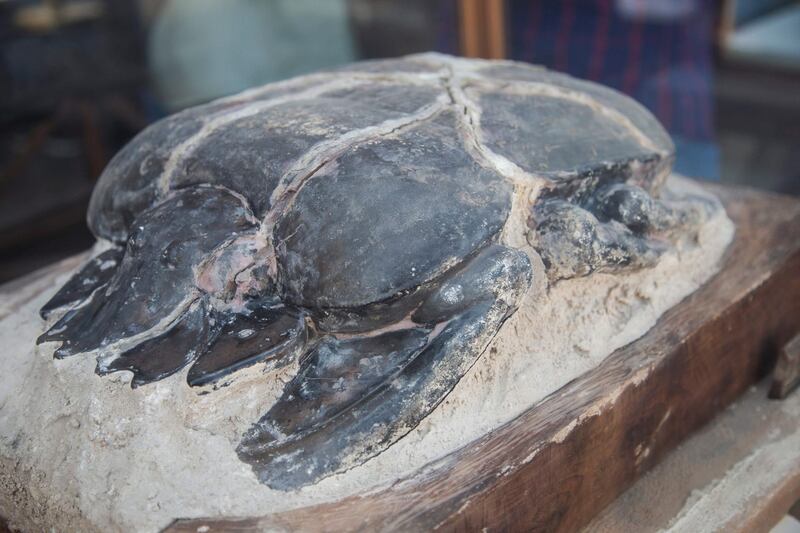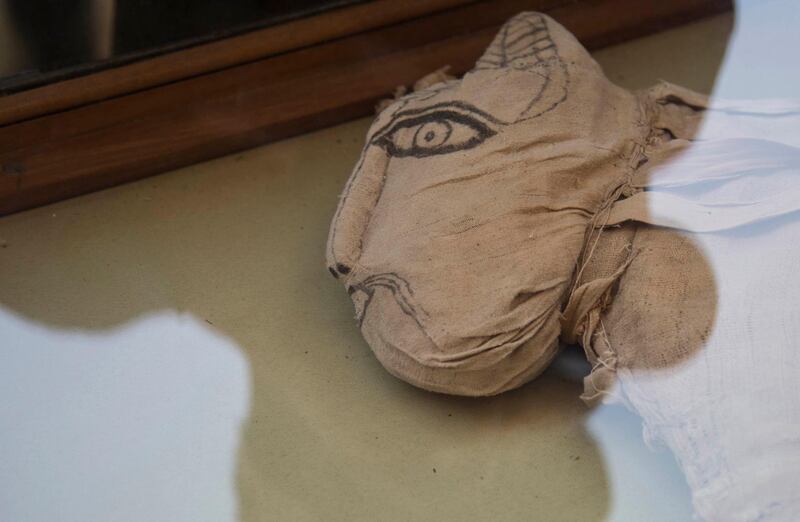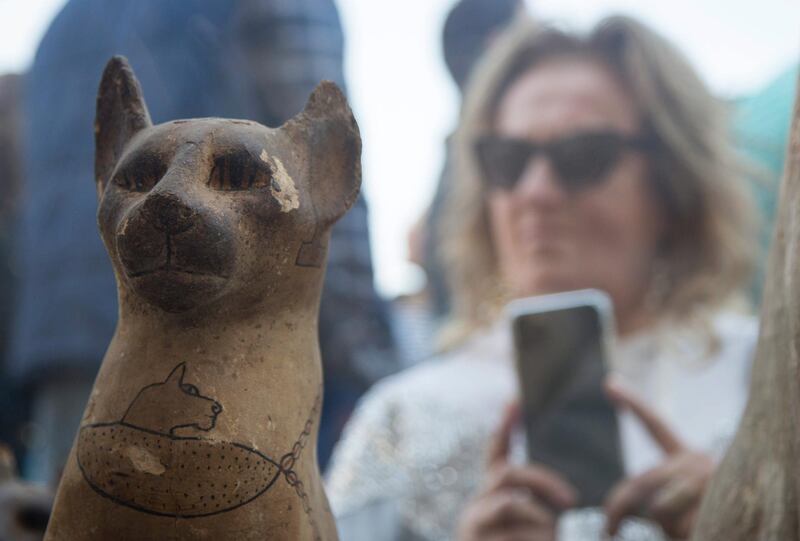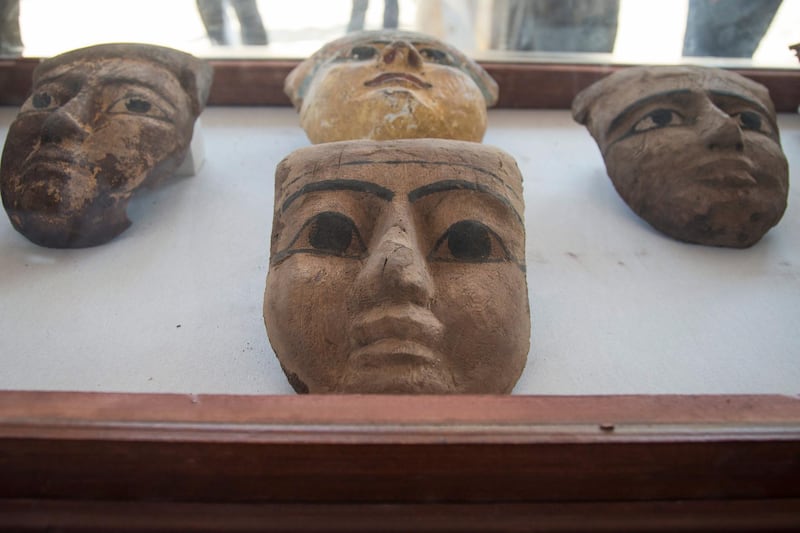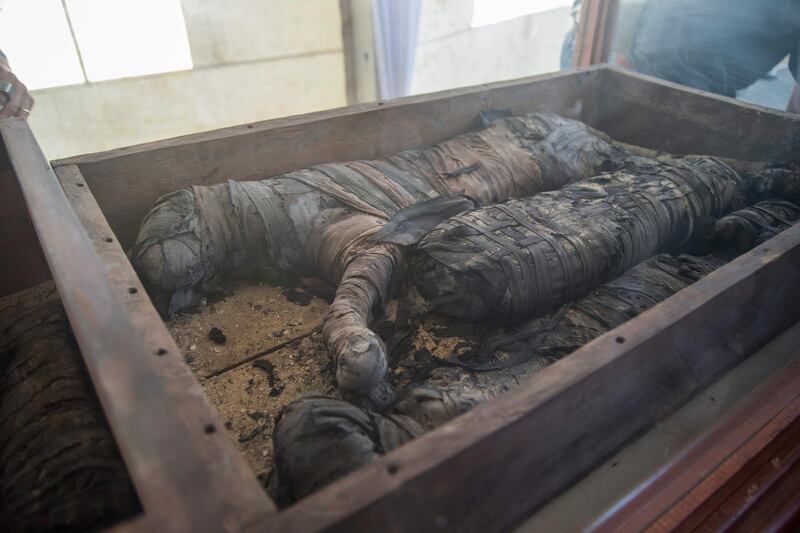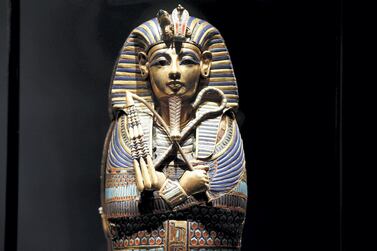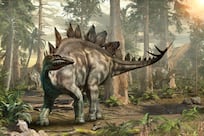Egypt's Ministry of Antiquities yesterday unveiled recently discovered animal mummies, saying an archaeological dig had unearthed lion cubs as well as several crocodiles, birds and cats.
Items from the new find were displayed at a makeshift exhibition at the famed Step Pyramid of Djoser in Saqqara, south of Cairo, near where mummies and other artefacts have been found in a vast necropolis.
“We are finding here hundreds of objects,” said Antiquities Minister Khaled el-Anany. “All of them are very interesting from the Egyptological point of view to know better this area.”
The Saqqara plateau hosted at least 11 pyramids, including the Step Pyramid, along with hundreds of tombs of ancient officials, ranging from the 1st Dynasty (2920 BC-2770 BC) to the Coptic period (395-642).
Mostafa Waziri, secretary general of the Supreme Council of Antiquities, told reporters that local archaeologists found a cache that includes hundreds of mummified animals, birds and crocodiles.
He said that among the mummified animals were two lion cubs, and radar scans were needed on three others to determine that the mummies were also lions.
Archaeologists frequently find mummified cats but the recovery of a lion is rare. In 2004, the first lion skeleton was found in Saqqara, revealing the sacred status of the animal in ancient times. Archaeologists also found wooden and bronze cat statues representing the ancient goddess Bastet and a rare large stone scarab, which Waziri described as “the largest all over the world".
They also displayed two mummies of ichneumon, or the Egyptian mongoose, wrapped in linen bandages and wooden and tin-glazed statuettes of the goddess Sekhmet, represented as a woman with the head of a lioness. Scholars say Sekhmet (1390-1252 BC) was a goddess of war and the destroyer of the enemies of the sun god Re.
There were also strips of papyrus with depictions of the goddess Taweret depicted as a hippopotamus with the tail of a crocodile.
Markings on the displayed artefacts show that they date back to the Late Period (664-332 BC).
